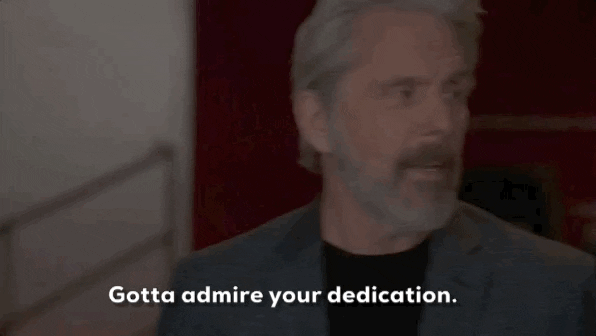- The Healthy Pickler Newsletter
- Posts
- My Back Hurts? What Should I Do?
My Back Hurts? What Should I Do?
A Game of Two Halves: Acute and Chronic Lower Back Pain


In the realm of pickleball, where agility and precision are paramount, the specter of low back pain (LBP) looms as an unwelcome adversary. This article ventures into the intricate landscape of LBP, revealing its global impact and its significance among pickleball enthusiasts. Distinguishing between acute and chronic LBP takes center stage, with acute pain often swiftly arising after intense play and resolving within three months, while chronic LBP, extending beyond this timeframe, poses a more complex challenge. Navigating LBP treatment mirrors honing pickleball skills – demanding dedication and strategy. However, predicting LBP's development and prognosis is intricate, with factors showing associations rather than straightforward causes. The research underscores the complexity; direct links between LBP recovery and factors like spinal loading or sitting duration remain elusive. Recovery dynamics highlight the influence of pain intensity, symptom duration, and past episodes. Just as the pickleball court requires adaptability, navigating LBP's complexities necessitates a nuanced understanding. By acknowledging these strengths and gaps, pickleball enthusiasts are better equipped to enjoy the game without the unwelcome interruption of LBP.

Low back pain (LBP) transcends borders, affecting individuals globally. It's not solely a physical challenge; its impact can extend to the activities you cherish, including your favorite game. As we delve into the intricacies of LBP, it’s role in causing disability and hindering playtime becomes evident, especially among active pickleball players.
Within the pickleball arena, distinguishing between acute and chronic LBP assumes vital importance. Acute pain surfaces after a match or during activities, usually resolving relatively quickly. These symptoms, persisting for under three months, often yield favorable recovery outcomes. Astonishingly, nearly 80% of adults recuperate within 6 to 8 weeks, with an impressive 83% returning to work within just 3 months.
Conversely, chronic LBP involves prolonged symptoms, surpassing three months, which introduces a more intricate challenge. Recovery becomes more complex, demanding innovative strategies to keep you engaged in the game you love.

Gif by cbs on Giphy
Just like improving your pickleball skills takes dedication and strategy, mastering the treatment of LBP is a similar challenge. But there's a catch when it comes to predicting how LBP will progress and its outlook – it's not a simple task. The mix of factors that come before and after you feel the symptoms shows connections between things, but they don't always directly cause each other.
Pioneering research by Bakker and colleagues. underscores this complexity, revealing elusive links between LBP recovery and factors like spinal loading, sitting duration, and sports involvement. Hancock's research illuminates recovery dynamics, showcasing that individuals with lower pain intensity, shorter symptom duration, and fewer prior episodes tend to return to the court more swiftly. Conversely, those grappling with intense pain, disability, and a history of LBP-related setbacks face a more arduous journey.

When it comes to enjoying your pickleball game to the fullest, keeping back pain at bay is a TOP PRIORITY. Far too often, players seek assistance only AFTER experiencing symptoms for more than three months. Our mission is to empower you to make informed decisions by sharing knowledge that enables early intervention and better understanding.
1. Seek Professional Evaluation: The Foundation of Prevention
Before delving into prevention strategies, it's crucial to emphasize the significance of seeking professional evaluation. Now, let's talk strategy. The road to effective diagnosis and treatment for lower back pain is far from linear. It demands a nuanced approach that takes into account the unique characteristics of each individual. Partnering with a skilled healthcare professional ensures that potential causes are identified, laying the groundwork for tailored treatment plans and targeted exercises. Again, the diagnosis and treatment dance for back pain isn't a one-step waltz. It's more like a series of moves that need a pro touch. It's about spotting what's causing the trouble and building a game plan for treatment. It's not always a direct path, but believe us, a well-informed approach amps up your odds. This proactive approach is pivotal in mitigating the risk of chronic issues down the line.
2. Be cautious about big promises on social media!!!!

In today's digital age, social media is a dynamic platform where information flows freely. While social media can offer valuable insights, it's also a breeding ground for exaggerated claims and quick-fix solutions. Before you leap into uncharted territory based on enticing posts, remember to scrutinize, fact-check, and consult reliable sources. Approach social media with a cautious mindset. Your back's health is too important to be swayed by flashy promises that might not hold up in reality. In fact, blogs, just like the ones we're crafting now, can often be utilized by individuals to regurgitate information and create an illusion of expertise on the subject. While they may not intentionally spread misinformation, they might lack the clinical skills needed to accurately interpret research findings. Here's a tidbit to remember: if someone lacks a valid health license they need to maintain, it's wise to approach their advice on injuries or pain with skepticism.
If someone lacks a valid health license they need to maintain, it's wise to approach their advice on injuries or pain with skepticism.

Once you've undergone a medical evaluation and it's been determined that your pain is musculoskeletal in nature, you can begin exploring essential strategies. A practice we consistently recommend is warming up your hips before hitting the court, as spinal mechanics are often influenced by the lumbopelvic complex. Check out this video featuring Dr. Brian for a quick pre-game warm-up demonstration!
Another aspect we always emphasize is mobilizing the anterior and lateral fascial lines. Essentially, this entails addressing a connective tissue continuation that can become tight, particularly in sports like pickleball.
Here is an artistic rendition of these two…

Deep Front Line

Lateral Line
Keep in mind that connective tissue adapts to the demands placed upon it; collagen tends to align with stressed areas. It's crucial to include recovery sessions in our program strategically to address these issues. Here's an exercise we find effective in tackling this challenge. Remember, connective tissue adapts to the demands placed upon it; collagen tends to align with stressed areas. Thus, embedding regenerative or tissue reconditioning sessions into your program is essential. Here's an exercise we've incorporated to address this concern. Here is an exercise we like to include to recondition the anterior and lateral fascial lines.
Embedding Regenerative or Tissue Reconditioning Sessions into your program is essential.
You heard it here first!

What do you call a wizard who’s good with ceramics?

